
Η Indira Gandhi ανάμεσα σε φωτογράφους (ξεχωρίζει η Homai Vyarawalla). Φωτ. Alkazi Collection of Photography (βλ. Photoblog on NBC News).

H Homai Vyarawalla με την Speed Graphic της. Φωτ. βλ. Trans-Asia Photography Review published by Hampshire College in collaboration with MPublishing, a division of the University of Michigan Library.
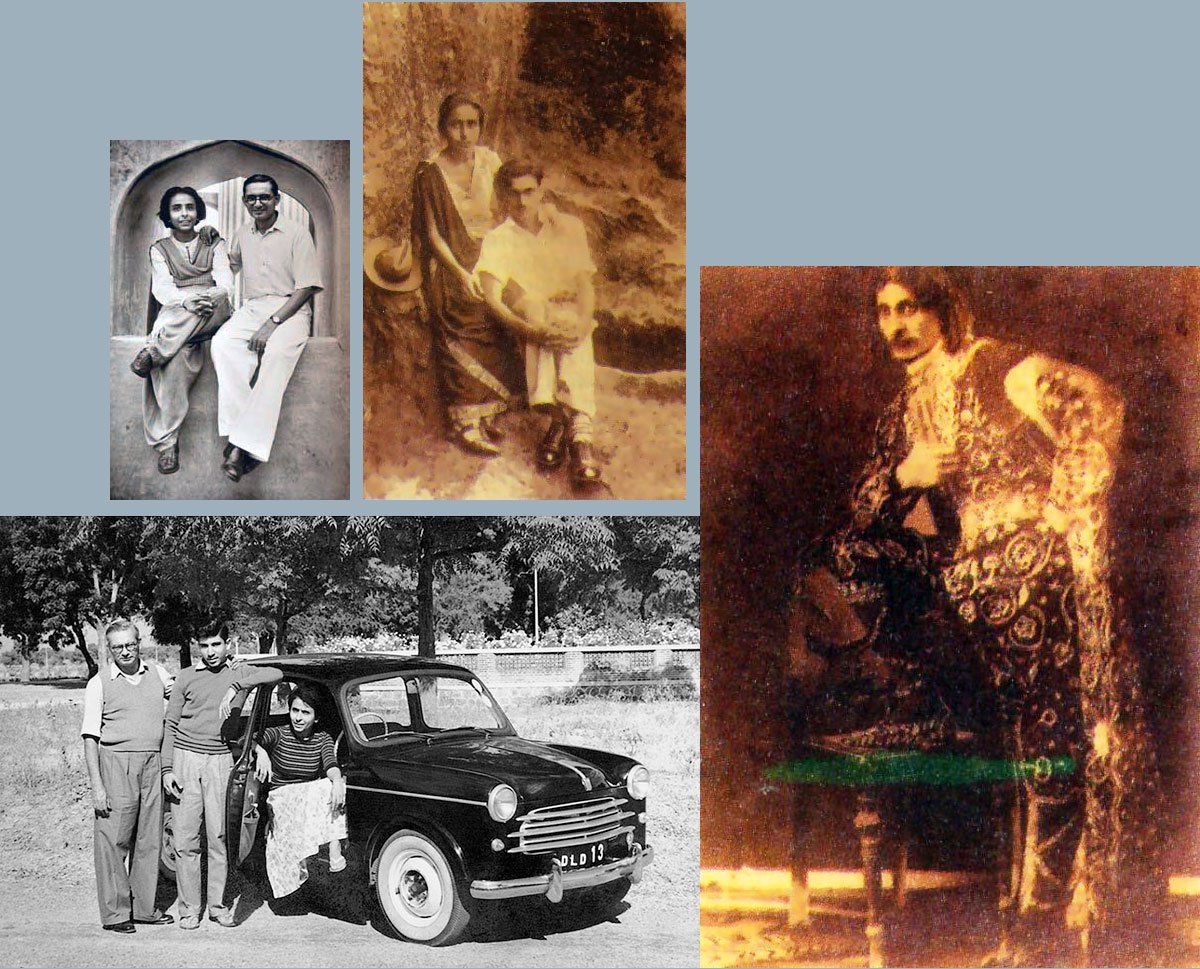
Με τον άνδρα της Maneckshaw και τον γιο της Farooq (πάνω αριστ. και κάτω). Δεξιά ο πατέρας της Dossabhai Hathiram Vyarawalla ντυμένος με θεατρικό κοστούμι (1932). Η Homai Vyarawalla σταμάτησε να ασχολείται επαγγελματικά με τη φωτογραφία μετά το θάνατο του άνδρα της το 1973. Πολλές φωτογραφίες της δημοσιεύτηκαν με το ψευδώνυμο "Dalda 13″ επειδή γεννήθηκε το 1913, παντρεύτηκε 13 χρονών και απέκτησε το πρώτο της αυτοκίνητο με τον αριθμό "DLD 13″.
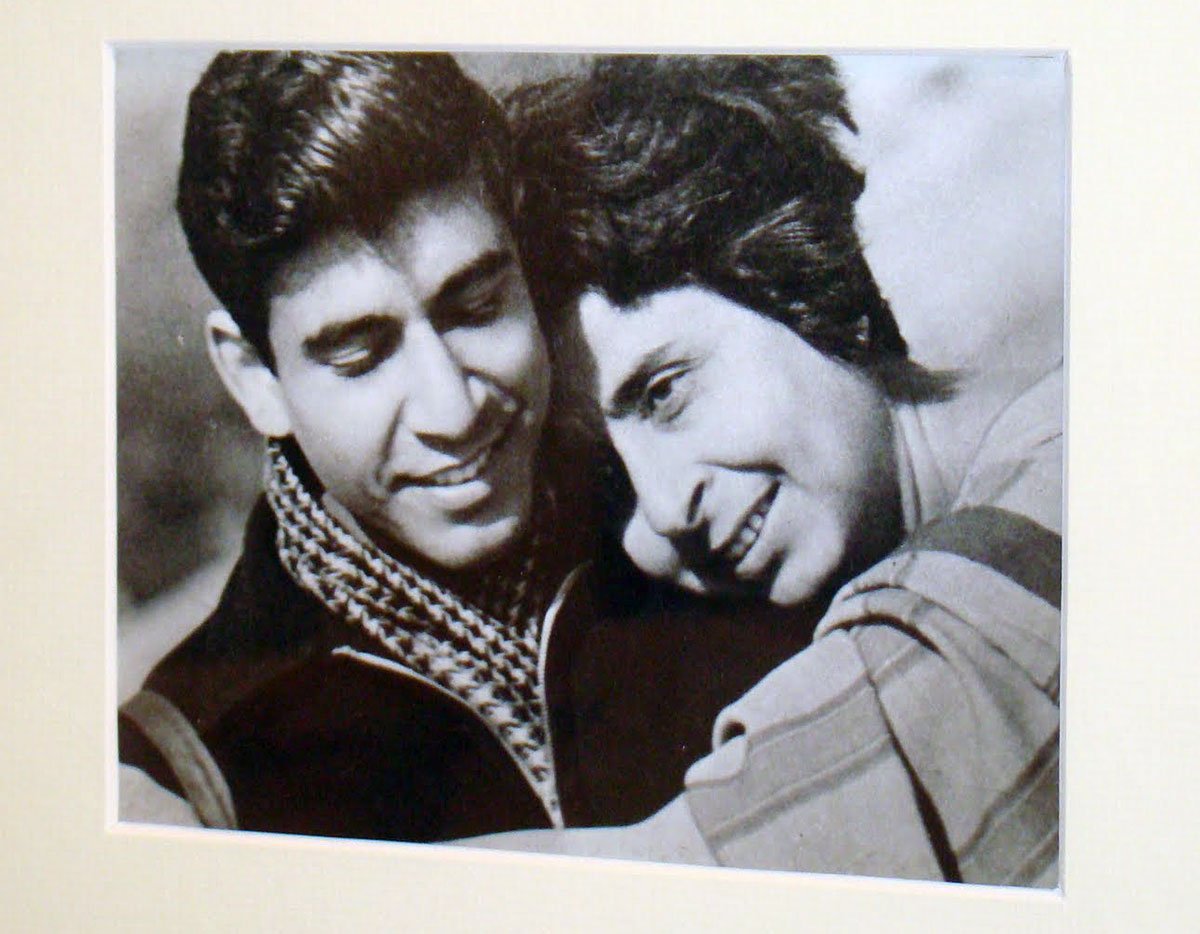
Με το γιο της.
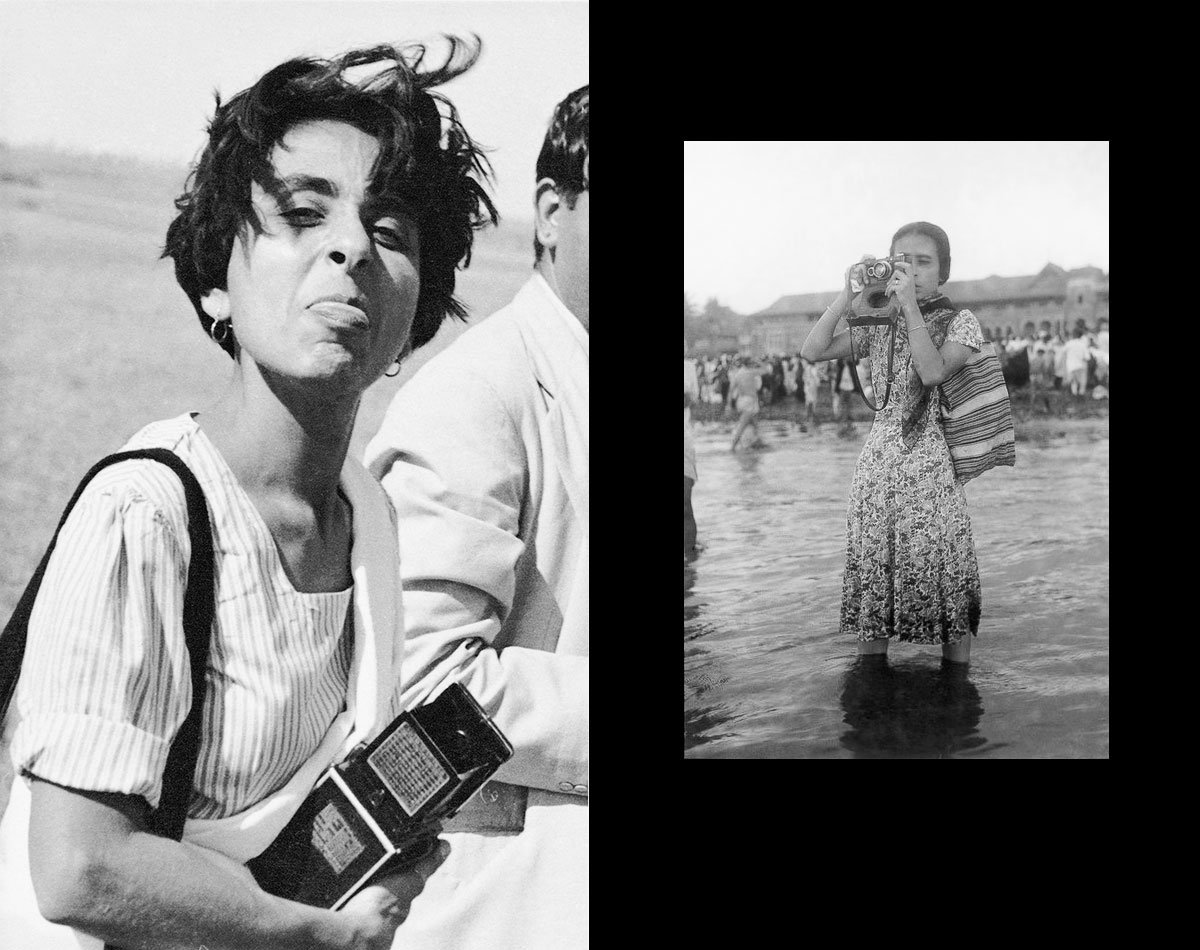
Αριστ. : σε ρεπορτάζ στην κοιλάδα Chambal (1950). Φωτ. Τhe Homai Vyarawalla Archive - Alkazi Collection of Photography.
Δεξ. : φωτογραφίζοντας τη γιορτή του Ganesh (γιού του Shiva και της Parvati) Chaturthi στην παραλία Chowpatty της Βομβάης (τέλη δεκαετίας του '30). Φωτ. Τhe Homai Vyarawalla Archive - Alkazi Collection of Photography.

Ο Gandhi, συνοδευμένος από τον κοντινό του φίλο Khan Abdul Ghafar Khan και τη γραμματέα και προσωπική του γιατρό Sushila Nayar, προσέρχεται στην Επιτροπή του Κογκρέσου όπου αποφασίστηκε η διχοτόμηση της χώρας (1947). Φωτ. Alkazi Collection of Photography (βλ. Photoblog on NBC News).
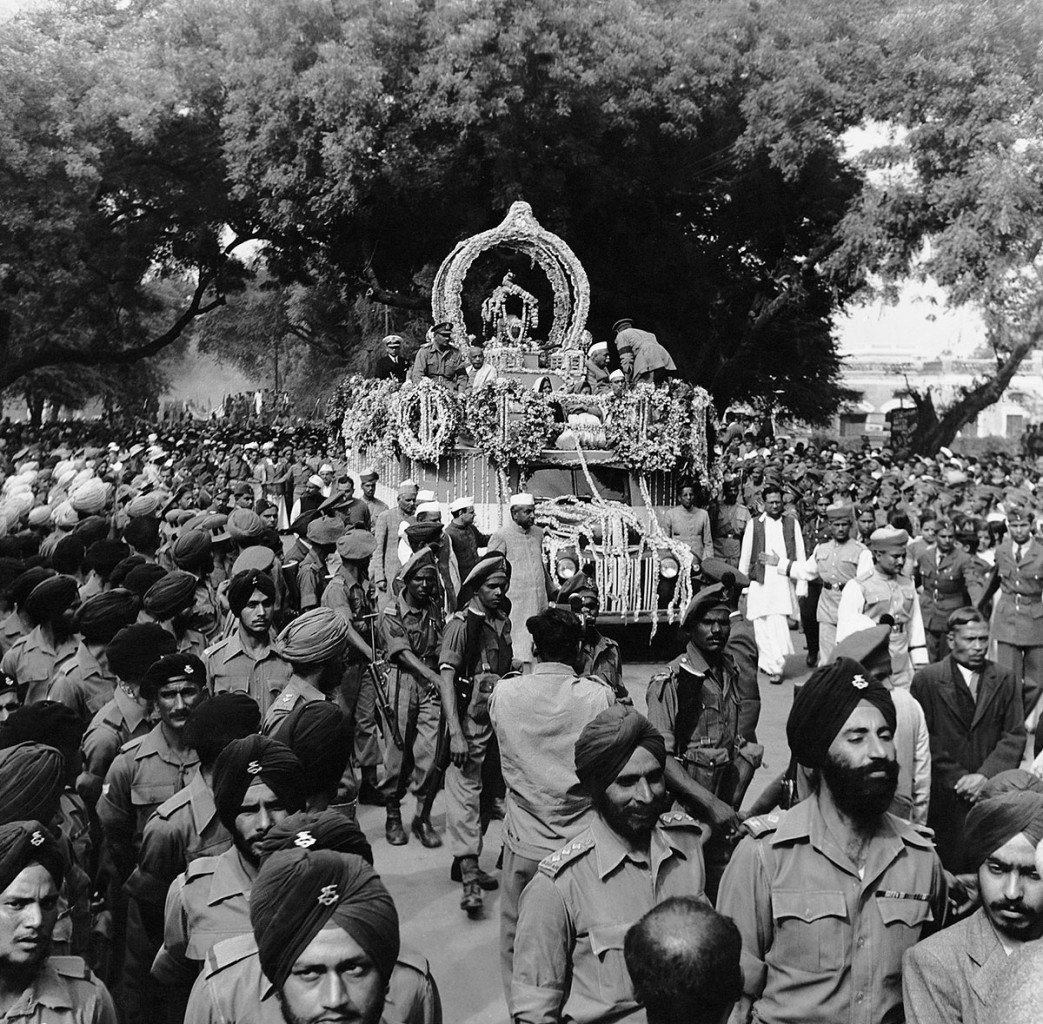
Οι στάχτες του Mahatma Gandhi μεταφέρονται με πομπή στην πόλη Allahabad (Φεβρ. του 1948). Σκορπίστηκαν αργότερα, σύμφωνα με τη θελησή του, σε μερικά μεγάλα ποτάμια ανά τον κόσμο, όπως ο Νείλος, ο Βόλγας και ο Τάμεσης. Φωτ. Homai Vyarawalla Archive - The Alkazi Collection of Photography (από την έκθεση Candid αφιερωμένη στην Homai Vyarawalla στο Rubin Museum of Art, New York).

Ο Mahatma Gandhi στο νεκρικό του κρεβάτι μετά τη δολοφονία του από έναν ινδό εθνικιστή που του πρόσαπτε τη διχοτόμηση της Ινδίας. Δύο εκατομμύρια Ινδοί παραβρέθηκαν στην κηδεία του. Φωτ. βλ. Saffronart.

Ρεπορτάζ στο Life για το πρώτο ταξίδι του νεαρού Δαλάι Λάμα στην επαρχία Sikkim της Ινδίας μέσα από το πέρασμα του Nathu La (1956). Ο Δαλάι Λάμα -με επίσημη στολή- συνοδεύεται από τον Panchen Lama (τον δεύτερο στην ιεραρχία του θιβετιανού βουδισμού).

Ο Δαλάι Λάμα, ο Nehru και ο Chou-en-Lai, Πρωθυπουργός της Κίνας του Μάο (δεκαετία του '50). Φωτ. βλ. Scholars without Borders.

Αριστ. ο Δαλάι Λάμα σε νεαρή ηλικία και δεξ. ο Nehru την ώρα που απελευθερώνει ένα περιστέρι της ειρήνης στο Εθνικό Στάδιο στο Νέο Δελχί στα μέσα της δεκαετίας του '50. Φωτ. Homai Vyarawalla Archive - The Alkazi Collection of Photography, βλ. Lightbox.Time. Για την Homai Vyarawalla ο Nehru ήταν το "all-time" αγαπημένο της θέμα και "εξαιρετικά φωτογενής".
"Όταν πέθανε ο Nehru", είπε στην εφημερίδα The Indian Express, "ένιωσα σαν ένα παιδί που έχασε το αγαπημένο του παιχνίδι, και έκλαψα, κρύβοντας το πρόσωπό μου από τους άλλους φωτογράφους."

O Ho Chi Minh, Πρόεδρος του Βορείου Βιετνάμ (και νικητής των Γάλλων στη μάχη του Diên Biên Phu) υποδεχόμενος από τον Πρωθυπουργό Pandit Jawaharlal Nehru και τον ινδό Πρόεδρο Dr. Rajendra Prasad κατά την επισκεψή του στην Ινδία το 1958.

Η ιατρός Dr. Helen Keller, καλεσμένη στο Προεδρικό Μέγαρο από τον Πρόεδρο Dr. Rajendra Prasad, δέχεται τα συγχαρητήρια του Πρωθυπουργού Nehru για το έργο της στην Ινδία (1955).

Ο Nehru με τον Σάχη της Περσίας και τη Soraya.

Ο Dr. Martin Luther King Jr. και η συζυγός του Coretta Scott King, συνοδεύονται από τον Πρωθυπουργό Nehru κατά την επισκεψή τους στην Ινδία το 1959. Φωτ. Homai Vyarawalla Archive - The Alkazi Collection of Photography (βλ. Lightbox.Time).

O Jawaharlal Nehru ανάβει το τσιγάρο της Mrs. Simon, συζύγου του 'Υπατου Αρμοστή της Μεγάλης Βρετανίας. Φωτ. Homai Vyarawalla - Alkazi Collection of Photography. Στη μικρή φωτογραφία ο Simon σε μασκέ πάρτι.

Η Indira με τον συζυγό της Feroze Gandhi στο αεροδρόμιο. "'Οταν έκοψα τα μαλλιά μου, η κυρία Gandhi ήρθε προς το μέρος μου και με συνεχάρη. Λίγους μήνες αργότερα είχε αποκτήσει κι εκείνη μία κουπ για κοντά μαλλιά που την κράτησε στην υπόλοιπη ζωή της". Φωτ. Homai Vyarawalla - The Alkazi Collection of Photography.

Η κηδεία του Nehru το Μάη του 1964.
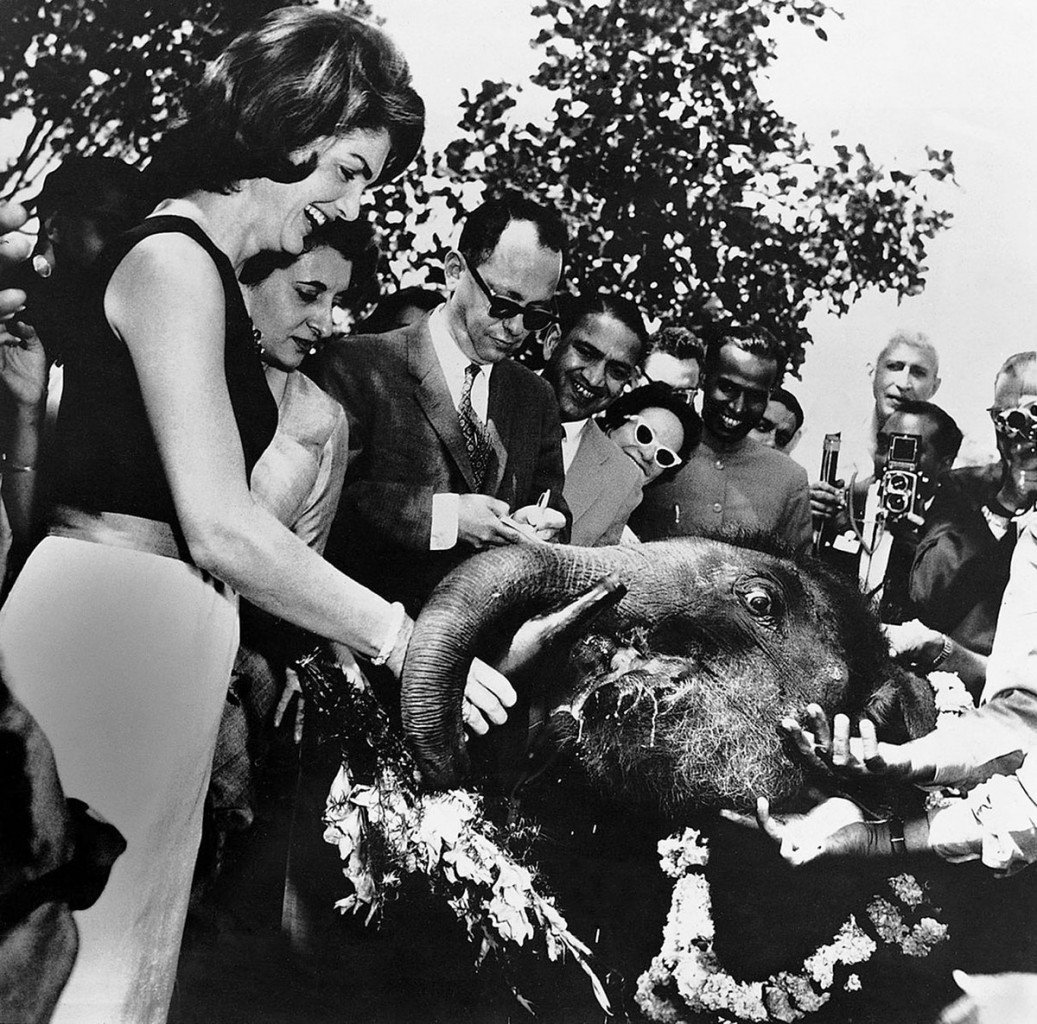
Η Jacqueline Kennedy ταίζει τον Urvashi, ένα μωρό ελέφαντα, στην κατοικία του Πρωθυπουργού Nehru (1962). Φωτ. Alkazi Collection of Photography.

Η Βασίλισσα Elizabeth II σε μία επίδειξη μόδας που οργάνωσαν οι γυναίκες των βρετανών διπλωματών (Central Cottage Industries, New Delhi, 1961). Φωτ. Alkazi Collection of Photography.

Victoria Terminus (σήμερα Chhatrapati Shivaji Terminal) στη Βομβάη το 1940. Φωτ. Homai Vyarawalla Archive - The Alkazi Collection of Photography (βλ. Lightbox.Time).

Η Rehana Mogul, συμφοιτήτρια της Homai Vyarawalla, στο εξώφυλλο της εφημερίδας Bombay Chronicle (Σεπτ. του 1941). Η φωτογραφία φέρει (για αδιευκρίνιστους λόγους) την υπογραφή του άνδρα της Homai Vyarawalla. Παράλληλα με τις σπουδές της στο Πανεπιστήμιο της Βομβάης, η Homai Vyarawalla παρακολουθούσε μαθήματα ζωγραφικής στη Sir Jamsetjee Jeejebhoy School of Art. Η συνεργασία της με την Bombay Chronicle ξεκίνησε το 1938.

H Rehana Mogul και η Mani Turner, συμφοιτήτριες της Homai Vyarawalla, στο εργαστήρι γλυπτικής της J.J. School of the Arts (Βομβάη, τέλη δεκαετίας του '30). Φωτ. Homai Vyarawalla Archive - Alkazi Collection of Photography (βλ. Trans-Asia Photography Review).

Αριστ. : φοιτήτρια στο Lady Irwin College (New Delhi, 1946).
Δεξ. : η Mani Turner, συμφοιτήτρια της Homai Vyarawallaat, σε πικ-νικ της Σχολής Καλών Τεχνών στη Βομβάη (1937). Φωτ. Homai Vyarawalla Archive - Alkazi Collection of Photography (βλ. Trans-Asia Photography Review).

Φοιτήτριες της J.J School of Arts σε πι-νικ της σχολής στη Βομβάη (1937). Πρόκειται για μία από τις πρώτες φωτογραφίες που δημοσίευσε η Homai Vyarawalla στην εφημερίδα Bombay Chronicle. Φωτ. Homai Vyarawalla Archive - Alkazi Collection of Photography (βλ. Trans-Asia Photography Review).

Η Rehana Mogul στο πι-νικ των φοπιτητριών. Φωτ. Homai Vyarawalla Archive - Alkazi Collection of Photography. Βλ. Trans-Asia Photography Review ("Whatever Happened to Rehana? Homai Vyarawalla' s Photographs of Modern Girls and the Cultural Project of Nationalism").

Φοιτήτριες της J.J. School of the Arts. Φωτ. Homai Vyarawalla Archive - Alkazi Collection of Photography. Βλ. Trans-Asia Photography Review.

Πορτρέτο της Rehana Mogul (τέλη δεκαετίας του '30). Φωτ. Homai Vyarawalla Archive - Alkazi Collection of Photography. Βλ. Trans-Asia Photography Review.

Η Homai Vyarawalla με τη βιογράφο και φίλη της Sabeena Gadihoke. Φωτ. Bethany Murray.

The Lens and Life of Homai Vyarawalla, Rubin Museum of Art, New York. Φωτ. David De Armas.

Η αγαπημένη γωνιά της Homai απ' όπου μπορούσε να παρακολουθεί με τις ώρες τον κόσμο έξω. Φωτ. Ishaan Dixit. Η Homai Vyarawalla πέθανε το Γενάρη του 2012 σε ηλικία 99 ετών.
The woman who shot history
(συνέντευξη στο Fountain Ink).
India's first woman photojournalist, Homai Vyarawalla, died on January 15. She leaves behind black & white snapshots, many of them iconic, of a time and people that shaped the destiny of the country. In this 19-year old unpublished interview she speaks at length about herself, of the post-partition riots at Connaught Place and why she gave up photography in the 1970s.
Homai Vyarawalla (1913-2012) was perhaps the first Indian photojournalist of renown. Where talent was concerned she compared with the best Indian photojournalists. Her work had an intimacy scarcely evident in the pictures of her male colleagues. She was, in a sense, the predecessor of the great American woman documentary photographer Ruth Orkin, and as poetic in her visual expression.
When we—Kajal Das, Satish Sharma, both of them photographers, art historian and teacher Kavita Singh and I—first met her in 1993, both she and her sterling contribution to Indian documentary photography had been forgotten. Satish Sharma, brilliant photographer and bona fide eccentric, had stumbled upon her work and was astonished by it. He quickly talked to the people in the Max Mueller Bhavan in Delhi and mounted an exhibition. It was a uniformly excellent show and took the cognescenti by complete surprise.
None of the so-called lovers of photography knew of her. Her "news" pictures had both an endearing and enduring quality. These two qualities were as short in supply then as they are now. Raghu Rai, already an internationally known photographer, superb exponent of modern dance Chandralekha and her boon companion Sadanand Menon, a widely read journalist, were among the people who saw Homai Vyarawalla's exhibition then.
Edited transcript of the conversation:
How and when did you get interested in photography?
Well, in Art School, I was interested only in painting and music. But then I met my husband and he was keenly interested in photography. He did his own developing. He had no facilities, no electricity, so he would go under the four-post bed, covering the whole thing with blankets, and with a little kerosene lamp develop his films, take POP prints and find out which pictures were nice and then send those. The first pictures he took got published. That gave him the incentive to do more. He was studying at Vyara, that is where he came from, that is why my surname is Vyarawalla.
What was his full name?
Manekshaw Jamshetji Vyarawala. He came to Bombay after matriculation and there we met. He was staying with my uncle and I was next door. Naturally we started talking about things. And I got interested in photography. Being interested in art also, there was going to be one picnic and I said to myself why don't I take pictures? So I asked him to lend me his Rolliflex. Very reluctantly he gave it, because he was afraid I might spoil it. One full day I was after him, what exposure do I give for this light, what exposure for inside, and this and that. I learnt it that way—the exposures. And then I took pictures at the picnic, it was full sunlight so it was not so difficult. And I came back with six or seven rolls of 12 exposures each, because the girls and the boys wanted—there were 75 people and everybody wanted pictures—so I went on taking pictures. Film was so cheap those days. He developed the films and he found certain pictures very interesting. So he sent them to the Bombay Chronicle. And a full page of pictures came in the Bombay Chronicle. And I got one rupee per picture from the paper.
What year was that?
Probably between '35 and '40.
So that's how it all started...
Yes, we liked each other, we started moving around together—my mother didn't object—taking pictures and that way we got more and more interested...
You had only one camera...
Yes, if I saw a good angle I would say, give me, this is my picture. Like that, we would go on. He was interested in street scenes and then Diwali came and we went about taking pictures of the streets. We used to go with big lights, and people thought it was good shakun, (good omen) to have lights brought into the shop when the puja was going on, so they would give us sweets, treat us like royalty, and then say, would you give us the pictures?
The next day we would go to them with the pictures and they used to feel happy about it. That way we increased our area of work.
Where was he working?
The Times of India—in the job department, but this was his hobby. And on Sundays and Saturdays, I used to miss school. I don't think I ever attended school on Saturday. In those days we had half-days on Saturdays and my teachers were very good. I would sit down in front of them and write in the name of my mother saying, my daughter is very busy tomorrow so please give her off and I would give it to the teacher.
They would threaten me saying, I will give it to the principal! We would go off to the suburbs. We walked everywhere, those days there was no transport, and tried to take pictures of everything that caught our eye. We made series of different cottage industries, dhobis washing clothes, weavers, even the bullocks and the buffaloes.
Were you also discussing technique and the like...
I was not discussing technique, I was absolutely against technique; all I wanted to know was how the camera worked and what exposures to give.
You never discussed why a photograph is good, why another is not?
That we discussed, and then my training in art school was useful while enlarging pictures at the easel and composing pictures. We would discuss a frame, you know like that. Then we started supplying pictures to the papers also, all over India, Bombay, Madras, Calcutta and then abroad.
The government of India didn't have a photographic section. When they saw our pictures, they liked then, wanted copies of them—they would order 15 copies of each picture, we worked through the nights...
To make the prints...
Yes, we didn't have a glazing machine, we used to glaze them on glass sheets and near the fireplace, my mother would be standing near the angeethi, to see that the pictures didn't fall into the fire, catch them as they came out... the bathroom was our darkroom. After everybody had used the bathroom we would enter the place, take a big stool there, put the enlarging machine on top of it, he would be sitting on the one side of it and I on the floor developing the prints".












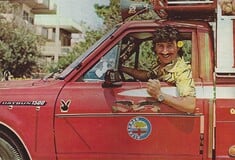


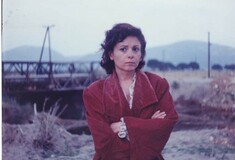














σχόλια